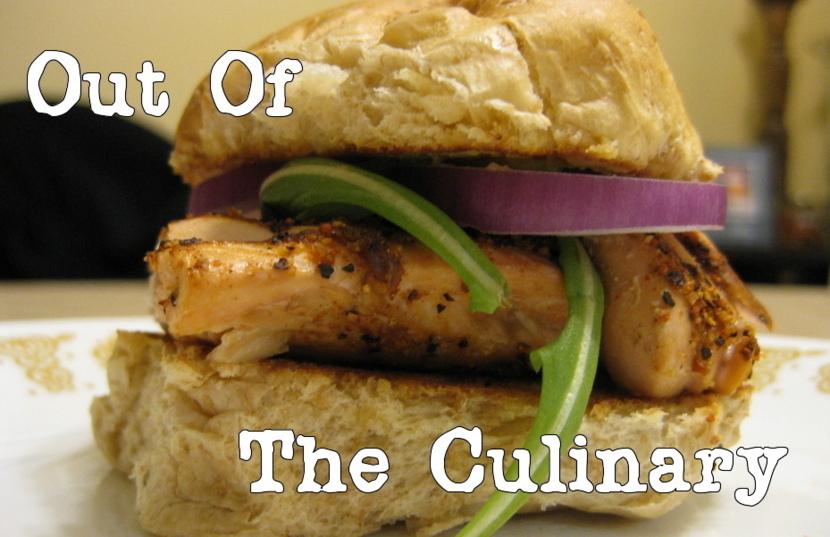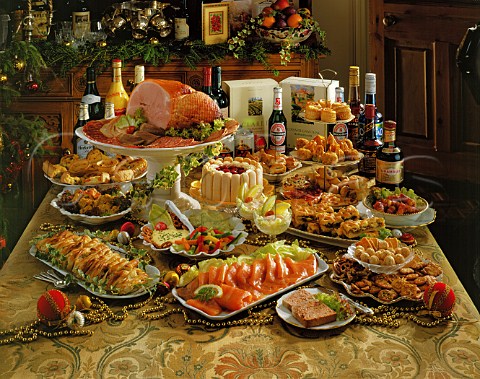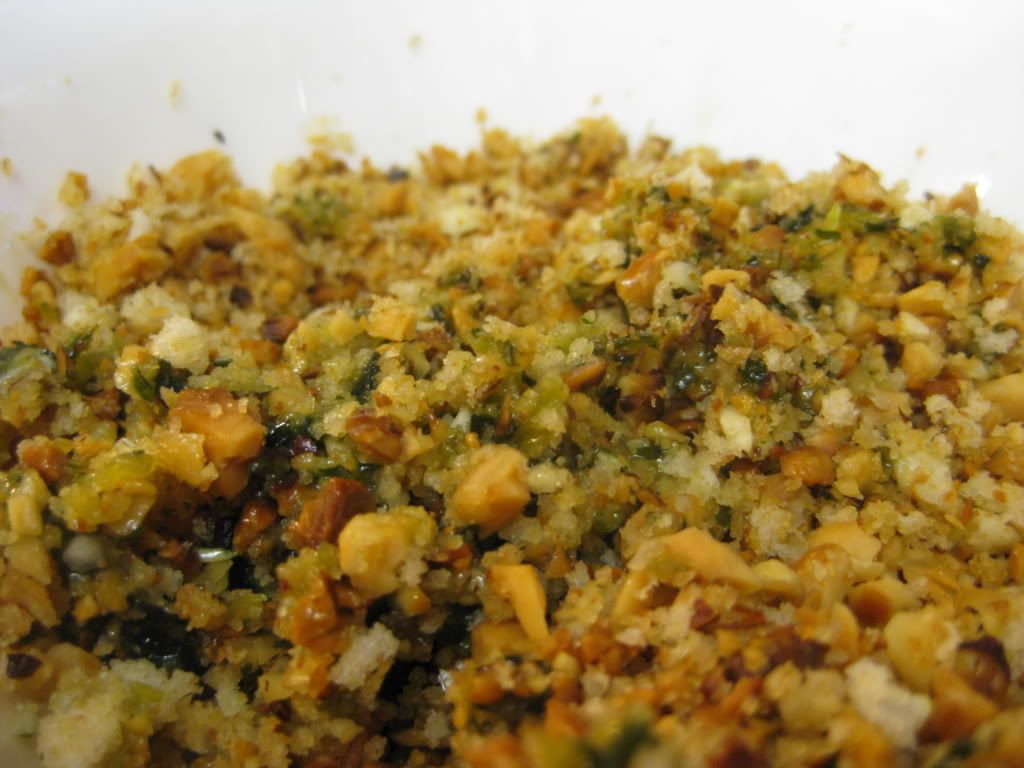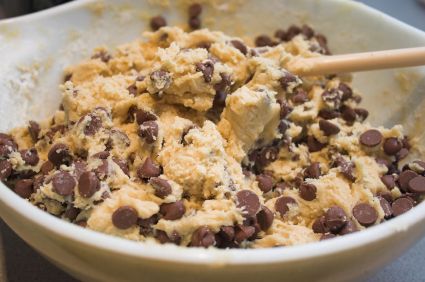****
The Recipe: Pita Chips
This is an original Out Of The Culinary Creation!
What You'll Need:
5 Pieces of Pita Bread (note, use the non-pocket variety)
Olive Oil
Salt
Good afternoon everyone! As Tyler mentioned, this a rare treat for our frequent blog readers. Not only one, but TWO recipes that are quick, easy, and not to mention tasty. My inspiration for the pita chips came from my company holiday party a week ago. They had delicious hors de vours including warm fluffy pita chips with spinach artichoke dip. While I was trying to duplicate the dish and go for the warm, fluffy pita chip approach, I did end up with warm pita chips. Fluffy...not so much...
Start by cutting with a large chef's knife (or slicing with a pizza slicer) the pita bread into eight sections - cutting the bread in half, that half into another half, so on and so forth until they form little triangles. In a small ingredient bowl, pour a tablespoon of olive oil. With a pastry brush, coat front and back of the pita bread with a thin layer of oil. Prepare a baking sheet or two with cooking spray. When the pita bread is coated, layer the baking sheet with the pita bread.
Preheat the oven to 425. Meanwhile, sprinkle or grind the salt over the sliced pita bread, but do not over coat the bread with salt.
Place the baking sheets in the oven for five minutes. Take out the pita chips and, using a metal spatula, carefully flip them over. Once these are all flipped, pop them back in the oven for five more minutes. Remove and enjoy with your favorite dipping condiment.
The End Result:
A word to the wise: don't let the pita chips be in the oven more than five minutes. If you do, you won't have fluffy pita chips, you will have crunchy pita chips. But these little morsels are delicious with any dip or condiment that you might have on hand. Spinach and artichoke dip, salsa con queso, hummus, sour cream, you name it. And, not to mention, they are incredibly healthy, since they were baked, not fried. So, if you're in the mood for something a little different, and easy to prepare, pita chips are for you!
Now, on the not-so-healthy side of things, I also made some cookies. I was perusing the cook book section of our nearest Barnes and Noble (like we always do,) and I came across a new cookbook. Whilst I saw this recipe, the Starbucks in shop was making a fresh batch of cookies and I knew I had to have this book. Fortunately, all the ingredients we had were at home and we didn't need to run to our nearest grocery store.
The Recipes: Peanut Butter Cookies with Chocolate Chunks
The Original Recipe Found In: Relaxed Cooking with Curtis Stone: Recipes to Put You in My Favorite Mood
What You'll Need:
1 Cup All-Purpose Flour
1/2 Teaspoon Baking Soda
1/2 Teaspoon Salt
1 Cup Natural Chunky Peanut Butter
1/2 Cup (packed) Light Brown Sugar
1/2 Cup Granulated Sugar
8 Tablespoons (1 Stick) Unsalted Butter, at room temperature
2 Tablespoons Honey
1 Large Egg
1 Teaspoon Pure Vanilla Extract
5 Ounces Semisweet Chocolate, coarsely chopped
Begin by preheating the oven to 350 degrees and line two large heavy baking sheets with parchment paper.
Mix the flour, baking soda, and salt in a medium bowl. In a large bowl, add the peanut butter, brown sugar, granulated sugar, butter, honey, egg, and vanilla. Using an electric mixer, beat all these ingredients until well blended. Stir the dry ingredients into the peanut butter mixture, in two additions, making sure all the ingredients are well incorporated both times. Stir in the chopped chocolate.
Using a cookie scoop or eyeballing three tablespoons full of dough for each cookie onto the baking sheets. Give them enough space to plump up. Bake for about 12 minutes or until they just begin to brown on top.
Let the cookies cool on the baking sheets for five minutes. Using a metal spatula, transfer the cookies to a wire rack. Enjoy the cookies warm and let them cool completely.
The End Result:
Oh...my...goodness...!! Now, if you are not a big chocolate and peanut butter fan, I think you might become one after you make this recipe. Everything was so well incorporated and it was so delicious and moist. Even after you let the cookies cool, they are still incredibly delicious and makes for a great dessert!
****
That's our brief look back at some of 2011's best recipes from our blog. There certainly were many more recipes worth focusing on - but we're saving those for another cookbook installment (maybe). Either way, it was fun looking back at some of our creations from 2011. Here's hoping 2012 is a great year for you & yours. Thank you for spending a few hours a week with us during 2011 - we'll see you in 2012!
~Cheers


















































